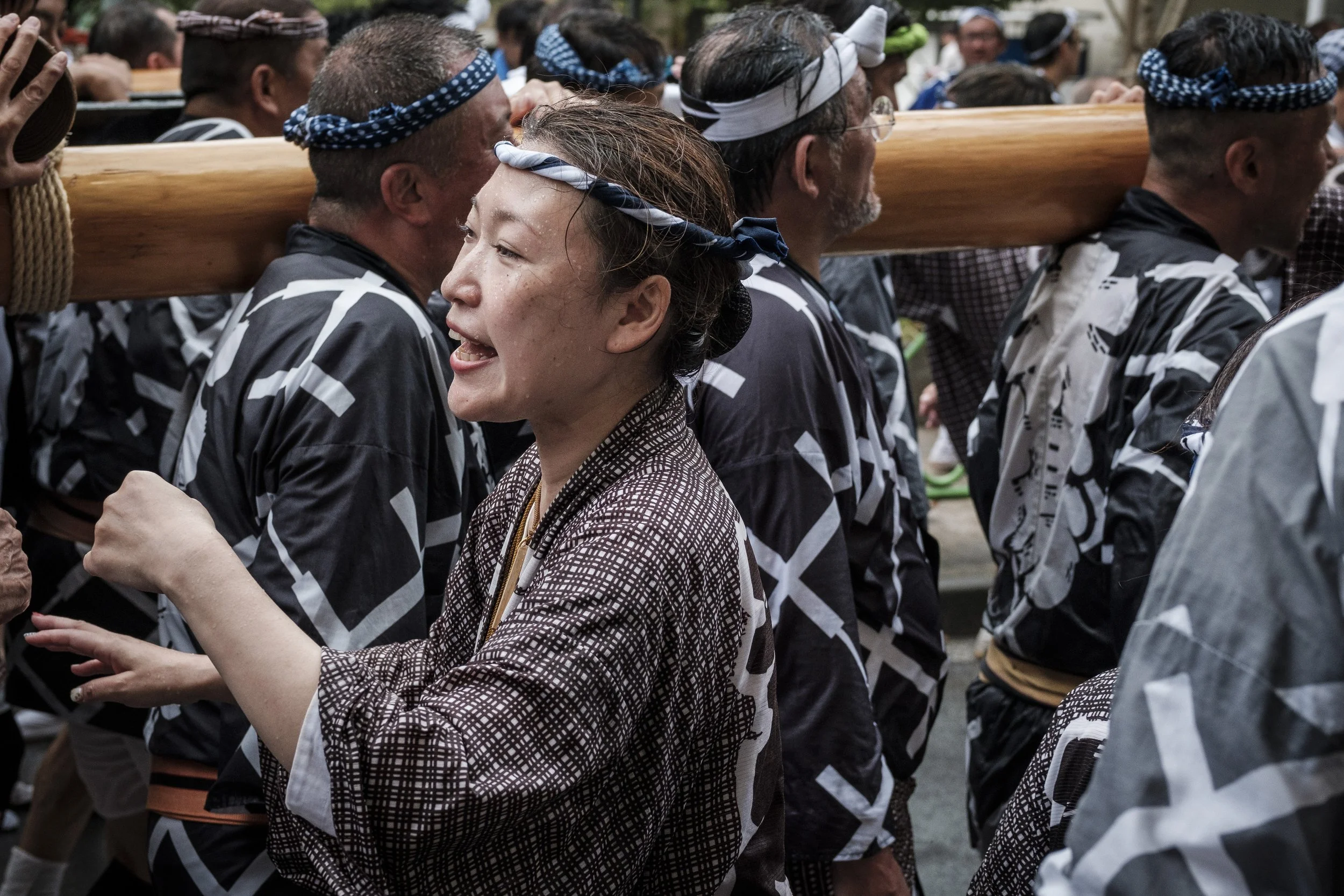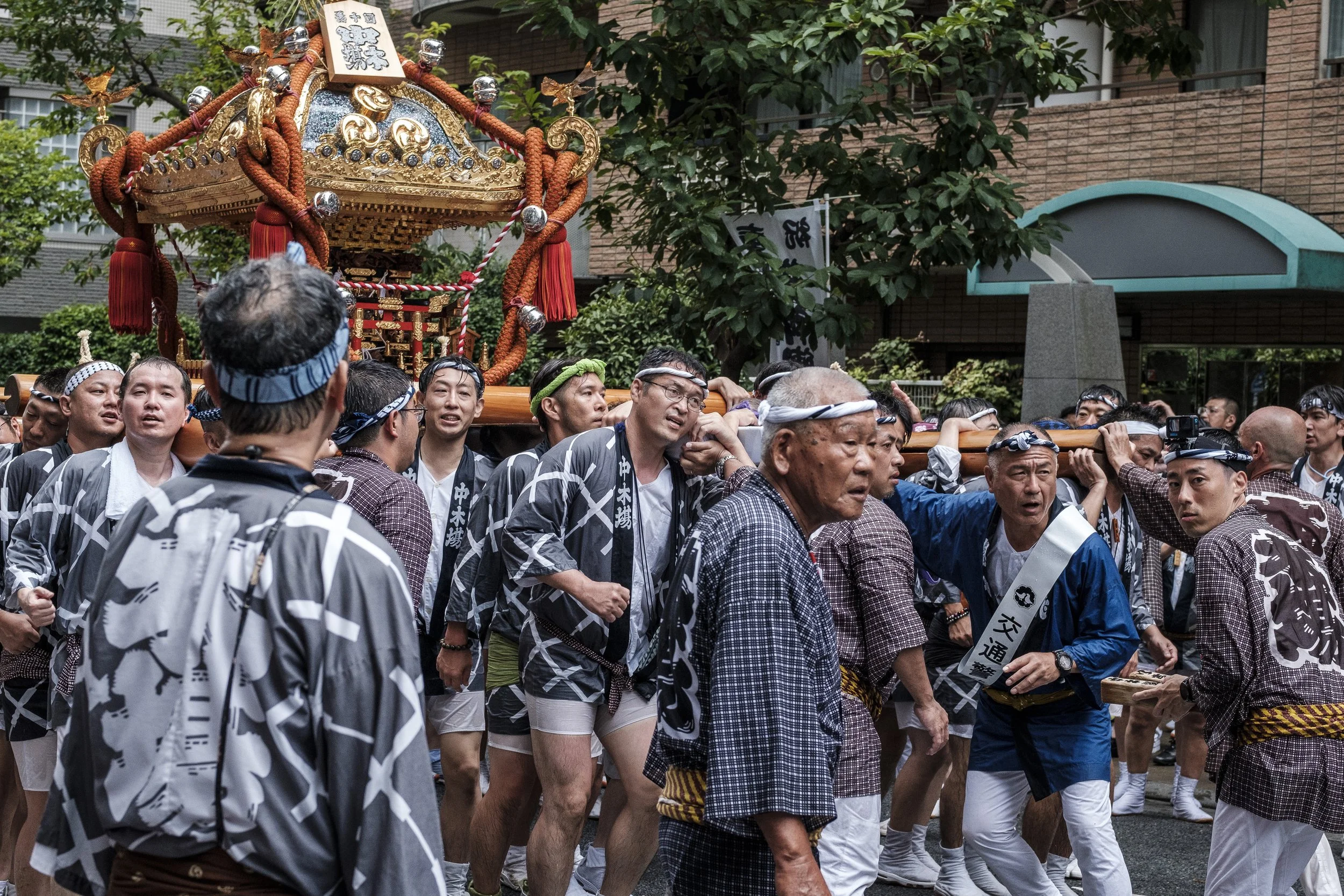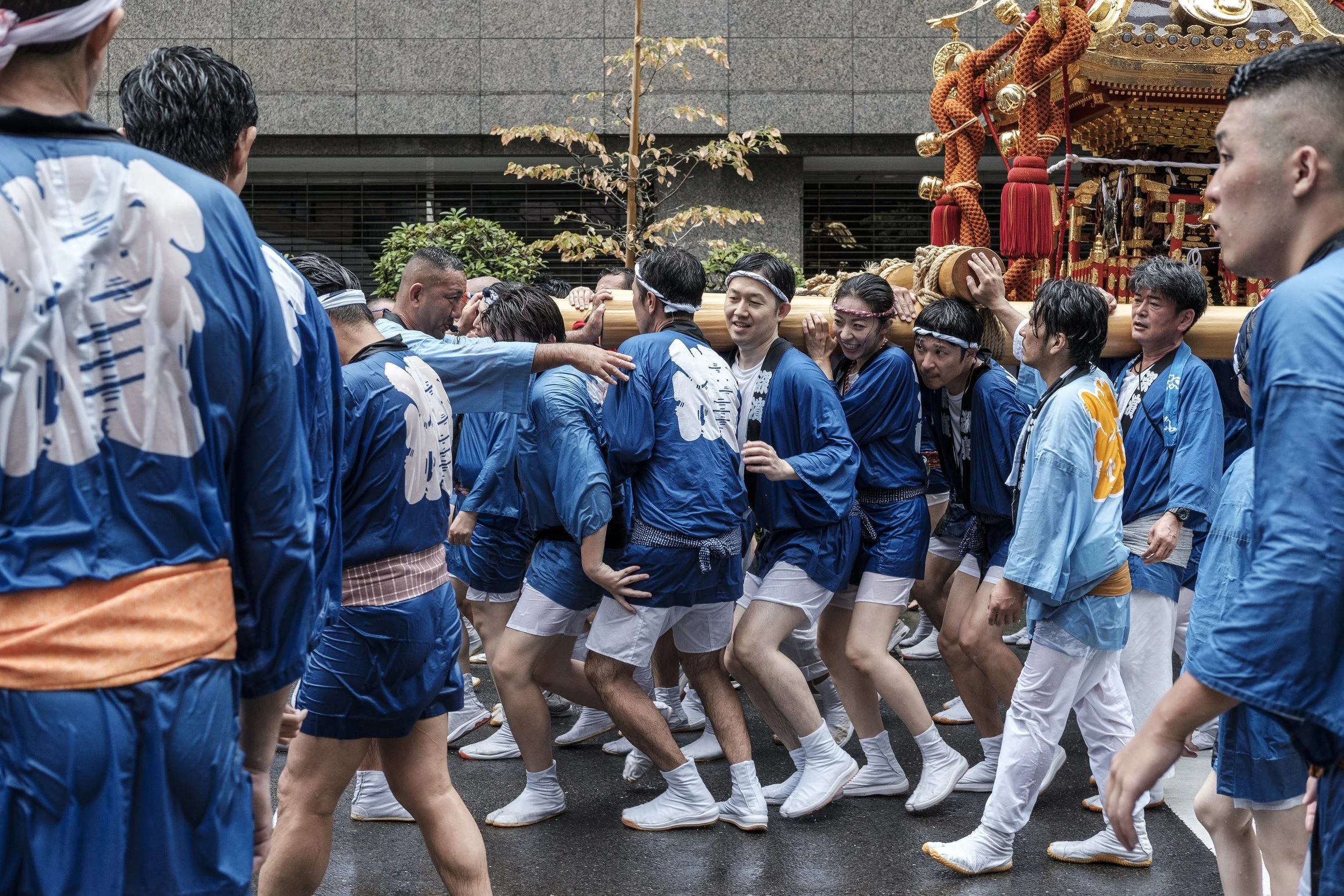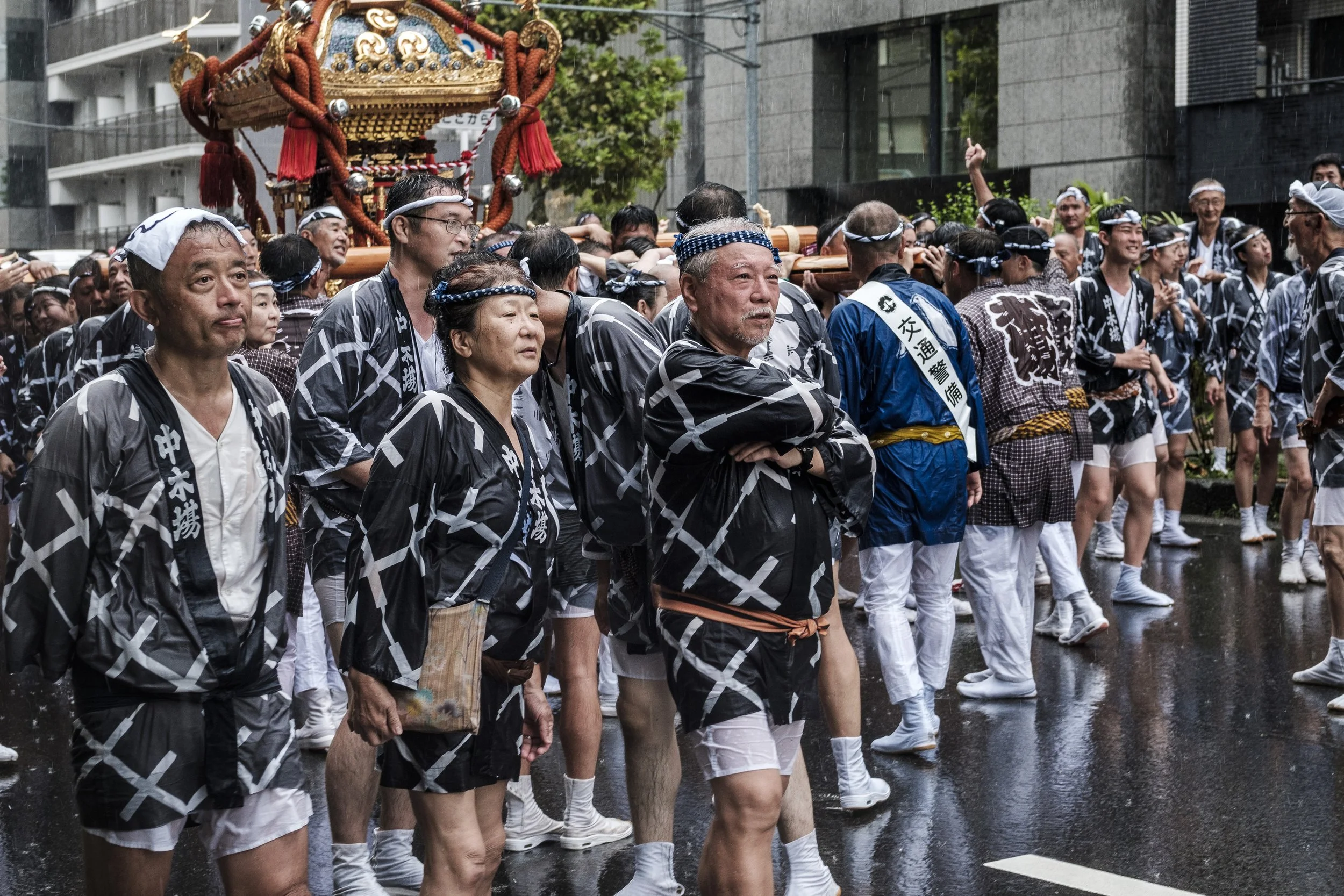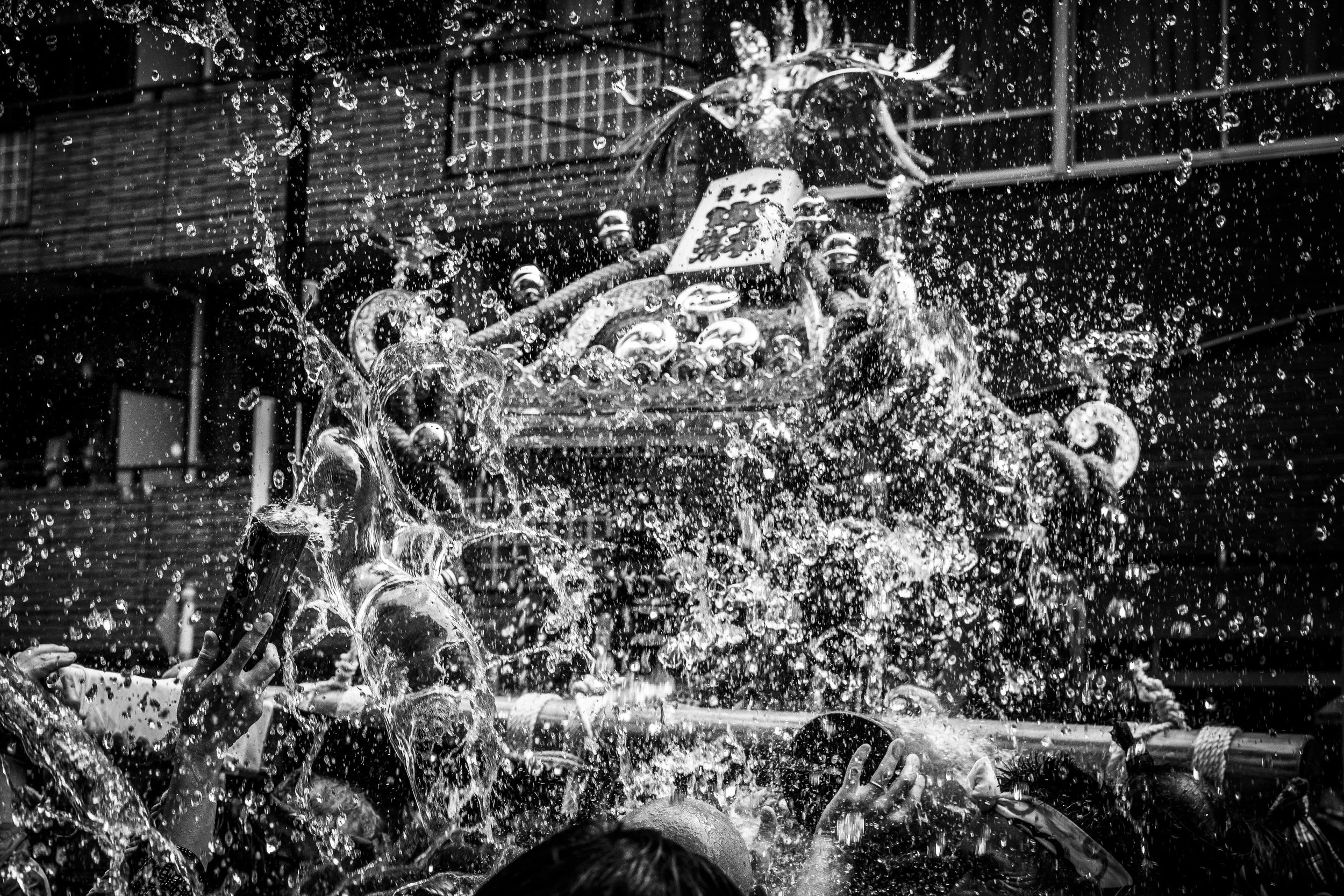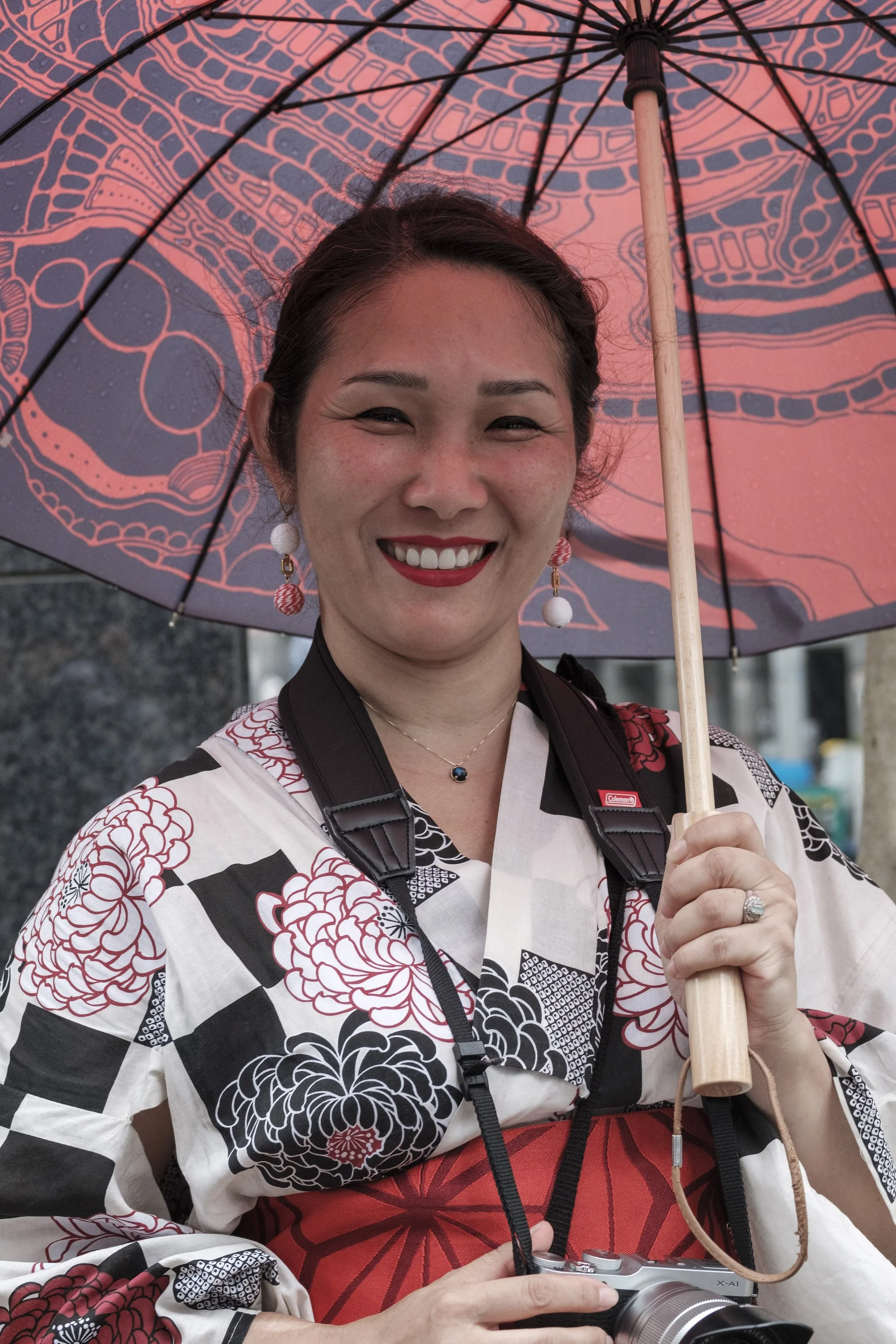Tiny fragments of life stories captured in one fleeting instant.
TOMIOKA HACHIMANGU MATSURI
On August 13th 2023 the Tomioka Hachimangu festival in Tokyo's Eastside Koto Ku district, took place for the first time in six years. This is the water splashing festival "Mizukake Matsuri" (and believe me, there is a lot of water about, including torrential rain this year), which takes place triannually and last time was slap bang in the middle of the pandemic, so of course it was cancelled. As I hope the photos show there was a real excitement among the participants and spectators to have their festival back on the streets of East Tokyo. It was also my first matsuri event since I moved to Tokyo also slap bang in the middle of the pandemic. Covid cost many people many things including their rituals.
Why are rituals important? I guess that's for each person to answer individually but what I saw and experienced was a coming together with a common purpose uniting people for a moment in time where the everyday worries and concerns were laid aside to reflect and enjoy what we have in community and how that is important perhaps vital in a huge city like Tokyo. From the very young to the very old, everyone was involved on some level, and to see the elderly Tokyo population out clapping and throwing water lifted my heart, I must say. Then to see the wee babies being carried around among the water and noise and spectacle was also a timely reminder of the cycle of life and the part that ritual plays in all of that.
I have been working in Fukagawa, Koto-Ku for a couple of years now, not so far from the Tomioka shrine where the Matsuri procession starts from.The shrine was established in Fukagawa in 1627 (397 years ago) Hachiman, whom the shrine reveres, was also a local kami (deity) of the Minamoto clan, thus the shrine received cordial protection by the Tokugawa shogunate. On the other hand, the shrine was revered by the people of Shitamachi ; Shitamachi is often used to describe an old town with a traditional atmosphere. Shitamachi literally means ‘lower city’ and is associated with the ‘common’ people’s culture and life. In these areas you can see many (famous) temples and shrines, as well as beautiful townscapes created by traditional houses and structures dating back to the Edo period through the Showa period.
This area is close to my heart as a photographer and a Iot of what I have shot in the last few years has been in and around the areas where the procession passes through, so to finally get to shoot it this year was exciting beyond belief for me and I had a wonderful time doing so. Some friends of mine were actually part of and carrying the Mikoshi (portable shrine)all day long and I was happy to be able to find them among the throng, street tog instincts I guess! The Mikoshiis the portable miniature shrine carried by the parishioners of a shrine during festivals that holds the spirit of the deity of that shrine. It is paraded around local areas and signifies the warding off of misfortune and wishing for the happiness of its people. More than 120 Mikoshi shrines are carried during the main festival held once every three years. Around 30,000 people take part in the festival and up to 500,000 people are out cheering them on and cooling them down with buckets of water; it's quite a sight!
The Tomioka Hachimangu Festival centers around August 15th and is counted among the Three Great Festivals of Edo ( The ancient name for Tokyo) To the traditional call of “Wasshoi, wasshoi,” and as its alternative name of “Water Splashing Festival” suggests, bearers of the portable Mikoshi are doused with purifying water by the spectators lining the roads, and bearers and spectators come together to celebrate. There's food too and in the middle of the day(it's a six am start for the participants) everything stops and the Mikoshi's are set down and the bentos (Japan's famous lunch boxes) come out everyone eats and drinks and takes a well deserved rest before the next stage of the journey back to the shrine. This year the rain held off until after lunch and the sun even came out for a while while lunch was being served! Food is essential to everything in Japan and as I observed everyone taking andrest and eating together, I was happy to be part of something communal even as an outsider, I saw friends and family eat and talk together, I saw community in action and that is easy to miss sometimes in a city as vast as Tokyo; The Beautiful Ordinary of people coming together and doing people things and for that short time, before the hard work of heading back through Tokyo to finish the day, all was well with the world and with me the sometimes outside of it all feeling photographer who tries to capture these intensely poignant moments.
That was then and this is now and post pandemic all the matsuri of Tokyo are back in full effect and this being August Tomioka Hachimangu is coming up. I have already booked a couple of days off so that I can go and continue the story of this festival from my perspective behind the lens of my beloved Fuji camera and that’s a story for another day…





